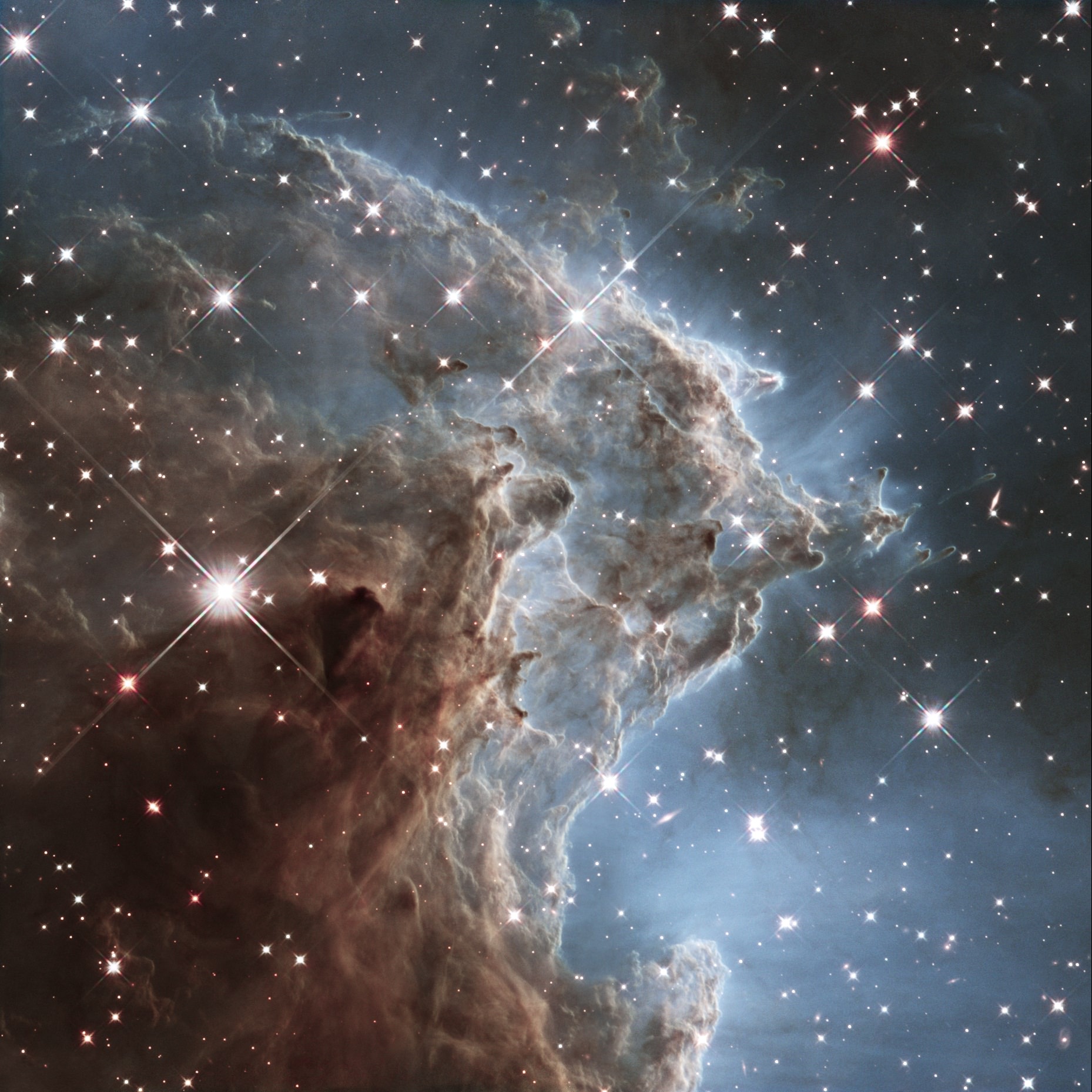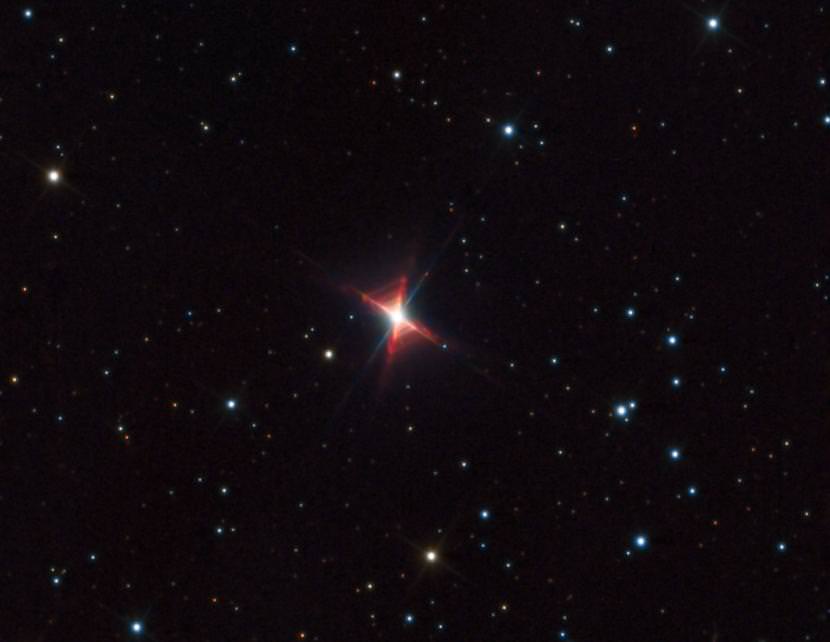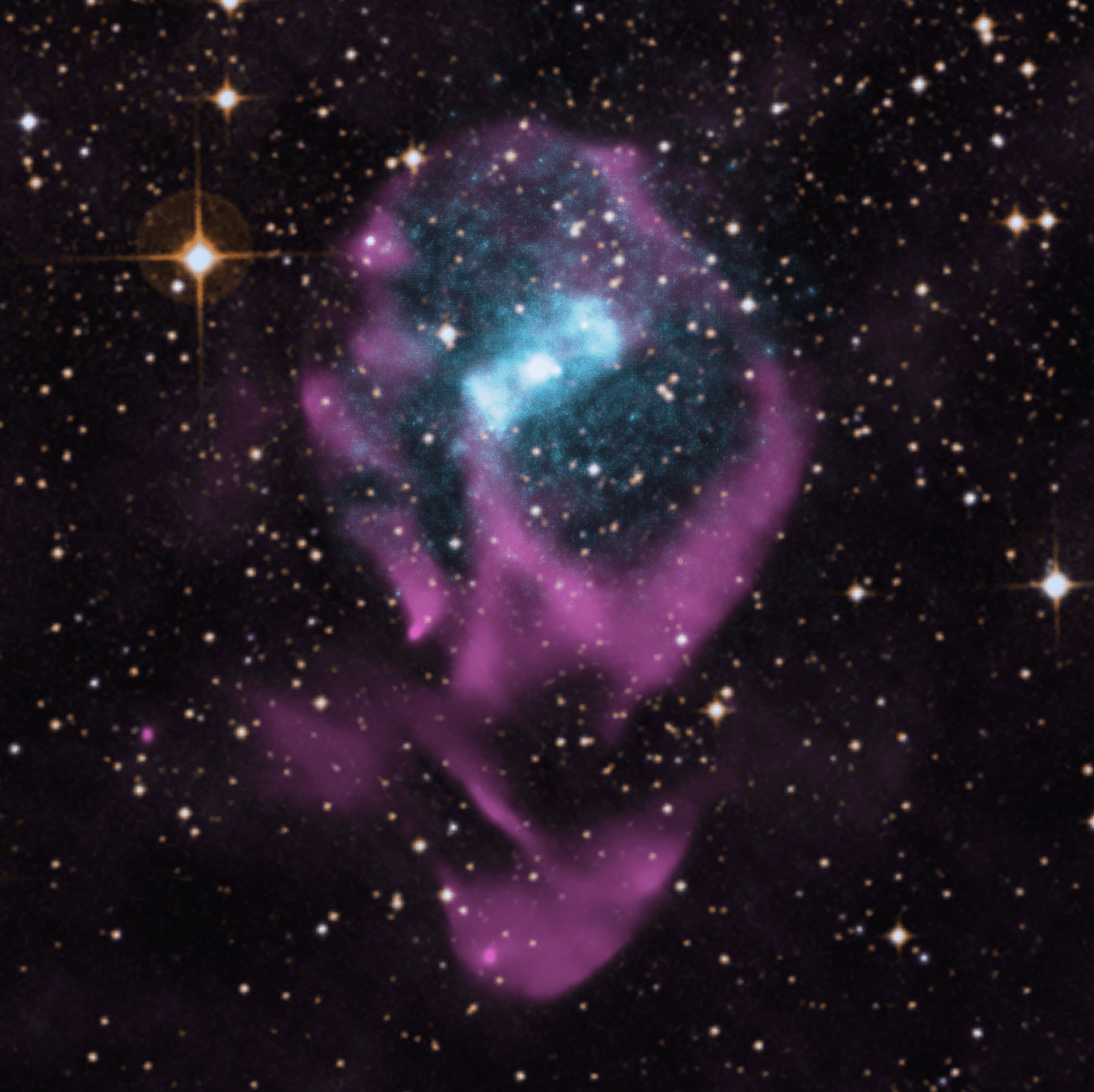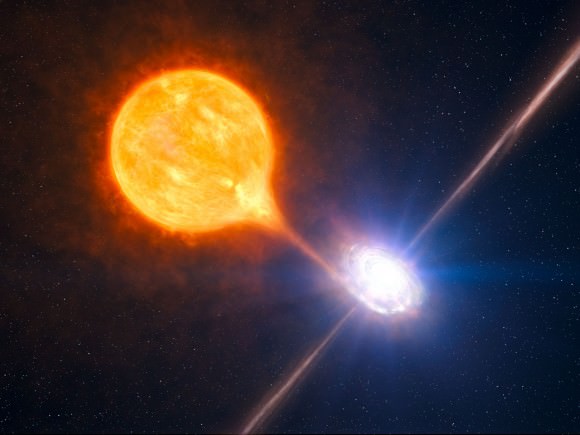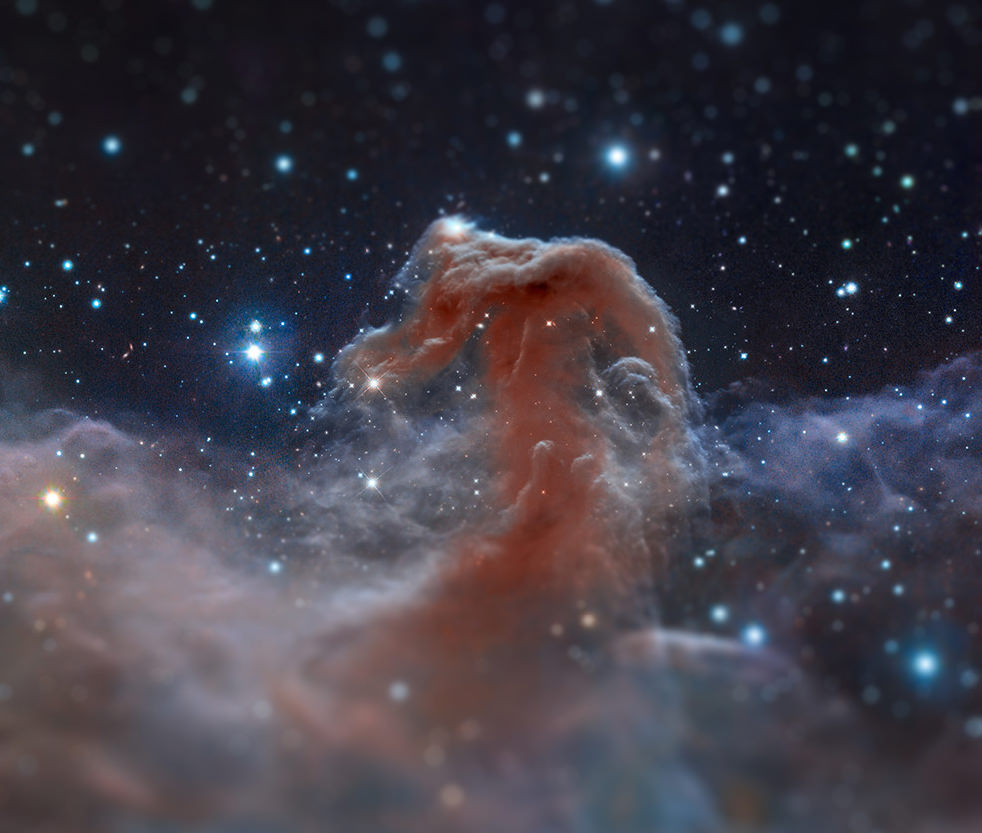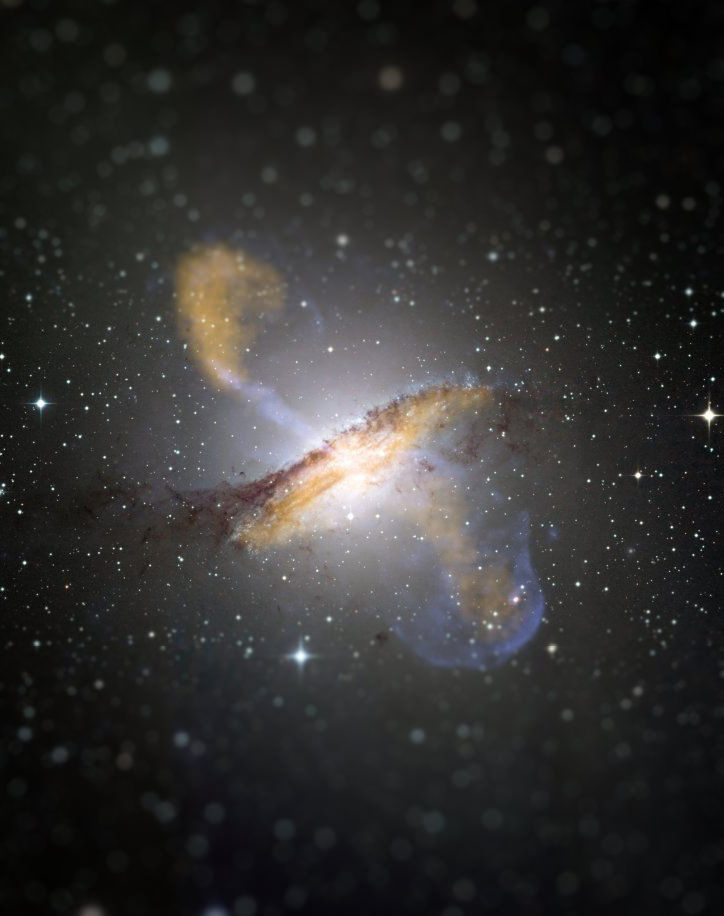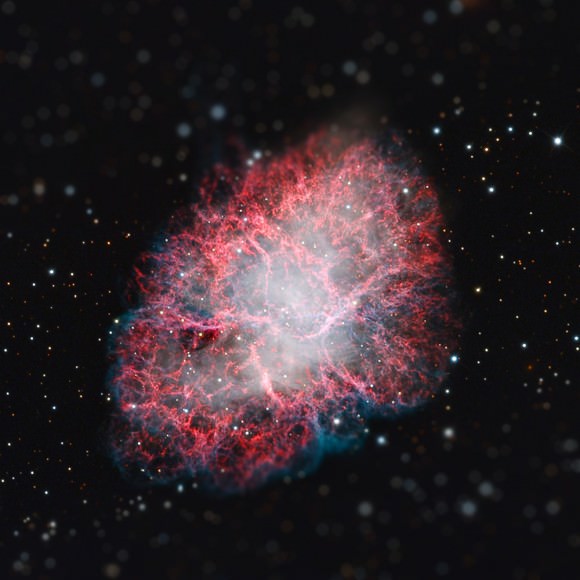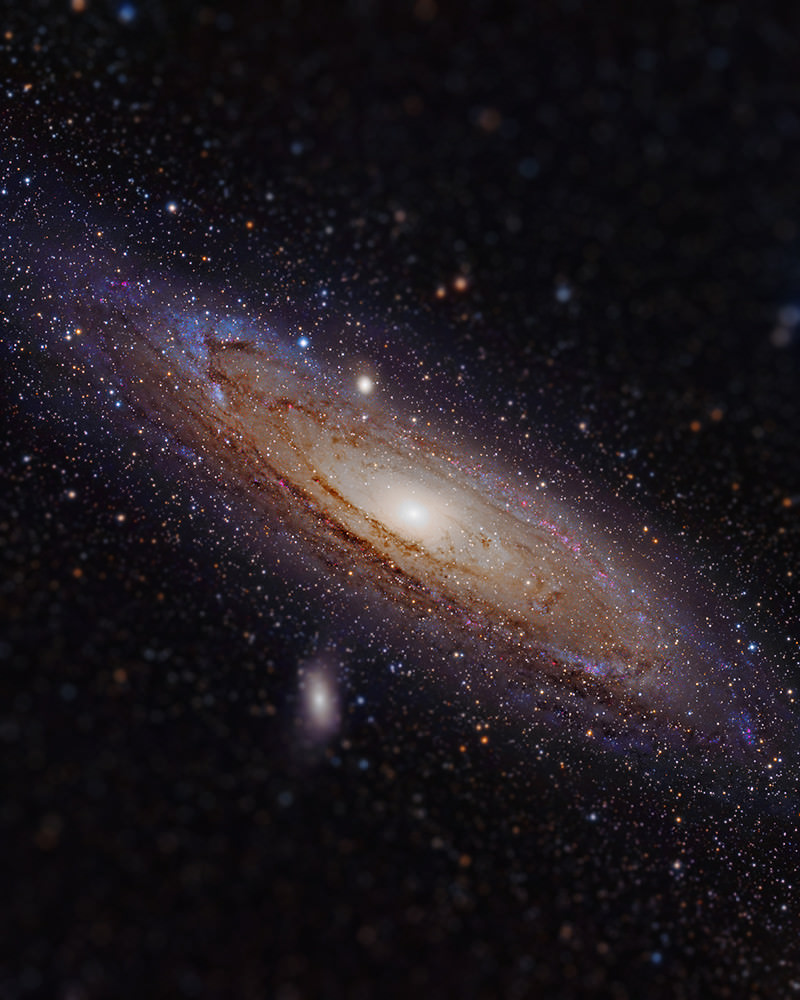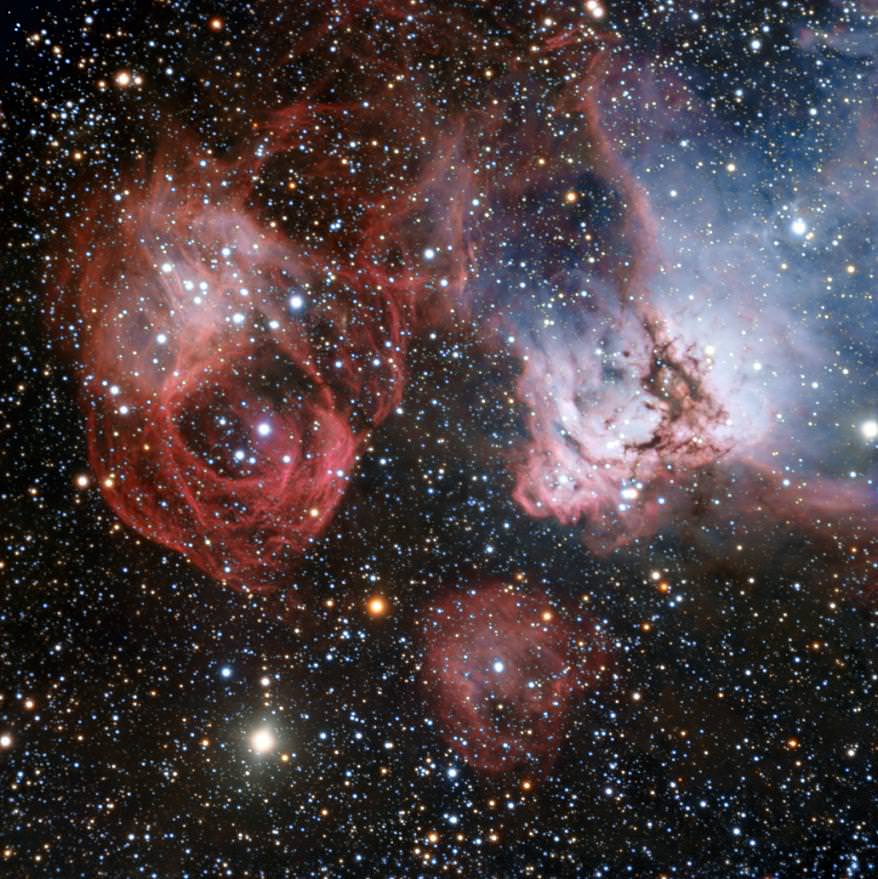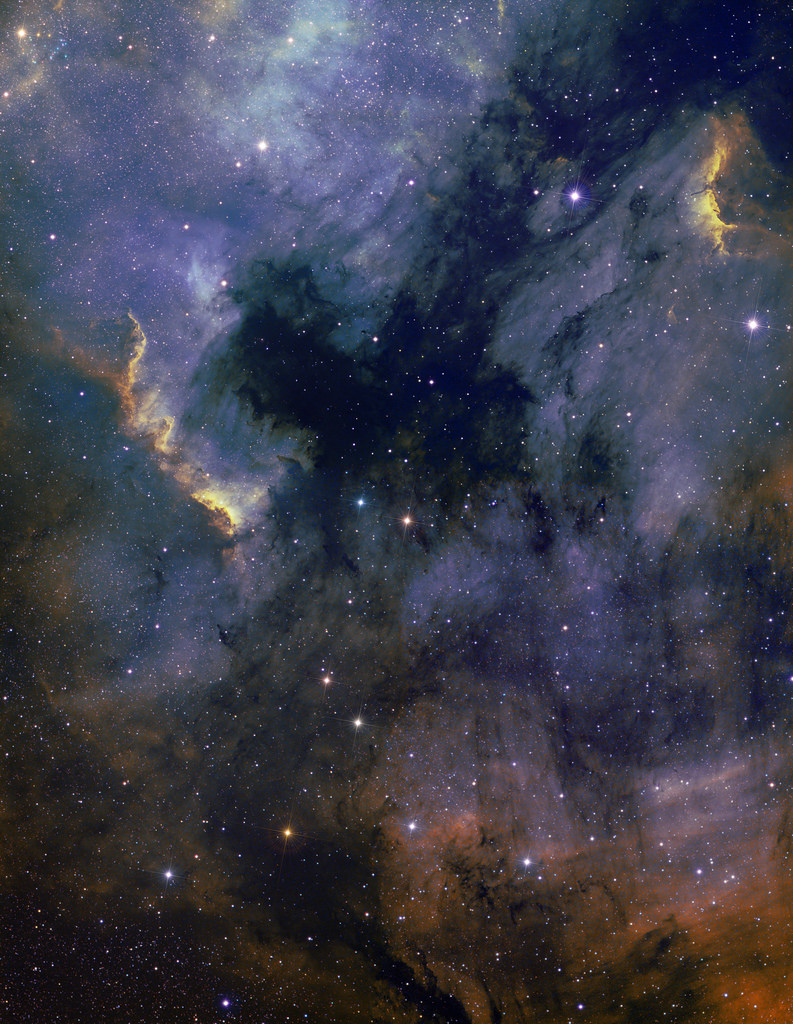Billowing gas clouds and young stars feature in this February Hubble Space Telescope image, released as the telescope approaches its 24th birthday this coming April. The telescope has seen a lot of drama over the years, but in this case, thankfully the excitement is taking place 6,400 light-years away. Here you can see starbirth in action in the nebula NGC 2174, which is sometimes called the Monkey Head Nebula.
“This region is filled with young stars embedded within bright wisps of cosmic gas and dust. Dark dust clouds billow outwards, framed against a background of bright blue gas. These striking hues were formed by combining several Hubble images taken through different coloured filters, revealing a broad range of colours not normally visible to our eyes,” the European Space Agency wrote.
“These vivid clouds are actually a violent stellar nursery packed with the ingredients needed for building stars. The recipe for cooking up new stars is quite inefficient, and most of the ingredients are wasted as the cloud of gas and dust disperses. This process is accelerated by the presence of fiercely hot young stars, which triggers high-speed winds that help to blow the gas outwards.”
Hubble’s dramatic history includes a deformed mirror, a rescue mission, and a nearly last-minute decision to do a shuttle flight for repairs and upgrades when the shuttle program was wrapping up. You can read more about Hubble’s colorful history at the Space Telescope Science Institute.
And Hubble has captured this nebula before, as you can see in this 2011 release.
Sources: ESA and Space Telescope Science Institute

